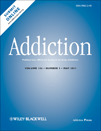WHY DO WE CARE? NOTES FROM THE PERIPHERY
Changes in US diagnostic terminology have more immediate impact in countries where addiction treatment and treatment access is determined by private insurances and the medical profession. History tells us, however, that they may also influence perceptions and practices in countries such as Sweden and Finland, where substance use problems have been defined traditionally as social problems and recognized as a matter of care, as well as cure, and control [1]. In the present Nordic situation, where politicians have diverted the responsibility for problem handling decisions to the ‘market’ (economists) or the (medical) professions [2,3], the impact of changes in the DSM system may possibly be observed fairly quickly and directly.
The primary motives for the change from ‘addiction’ to ‘dependence’, as presented by O'Brien [4], do not seem obviously relevant from a Swedish or Finnish point of view. As social scientists, we are not convinced that the most important issue is to draw a sharp line between people who are dependent on doctors' prescribed drugs and those who are dependent on drugs they have acquired without this help.
Terms matter in the addiction field; but simply changing a word will not lead automatically to greater uniformity in clinical or political practice. Typical for this field, as Christie & Bruun [5] have already pointed out, is the prevalence of ‘fat words’, a conceptual obscurity where the same word lends itself to various interpretations and practices [6]. Clinical terms will be used in epidemiological research, without necessary precautions, in various clinical settings with different connotations, and will be picked up in colloquial language in different cultures with further transformations of meanings [7,8]. Various actors will be involved in struggles about who has the dominant definitional position.
Swedish treatment history offers several examples of how actions and conditions related to high alcohol and drug consumption have been linked in complex ways to labels of addiction and misuse. The Alcoholics Act of 1913 was a social legislation focusing on control of the undeserving, poor person who was addicted to (hemfallen åt) drinking. In the 1950s, this law gave way to a new Temperance Act. The person identified as having alcohol problems was still a subject of social legislation, but described increasingly as sick. The post-war medicalization was influenced partly by the American alcoholism movement [3]. The welfare state's treatment optimism and the first DSM of 1952 reflected the same tendencies. Treatment in the 1950s included, apart from the still-prevailing compulsory work, some psychotherapy and Antabuse (disulfiram), and aimed at preventing the development of more serious problems. The widening target group was marked by the word ‘misuser’ in the legislation and in practice as an umbrella term for all people with problematic drinking, including those who could be sentenced to long-time incarceration.
In the 1960s, with the first drug wave, the proper location of drug treatment and particularly compulsory treatment of drug users was being discussed with some intensity. The political climate was not in favour of extending society's discriminatory coercive treatment on social indications. There was a differentiation between drug users, drug misusers and drug addicts (narkoman) in the government's report, but all were described as sick and potential subjects of the mental health legislation. However, complex political and discursive changes in the late 1970s changed the course. Both drug misusers and alcohol misusers became included in the new social legislation and targets for compulsory treatment on social indications. The sick drug user/misuser left the dominant scene of treatment [9].
Since the mid-1990s the Swedish specialized treatment system has been called the system for beroende och missbruk (‘dependence and abuse’). The introduction of this division (an obvious import from DSM/ICD) goes hand-in-hand with a stronger role for the medical profession in treatment.
The political and social implications of conceptual definitions of alcohol and drug consumption can extend far beyond the considerations of clinical treatment. The quest for evidence-based treatment of recent years could serve as our last Swedish example. The ambition to implement evidence-based methods, linked to diagnoses, emanates partly from the public sector's need for tools of control, through professional discriminative decisions, when treatment is purchased in a decentralized treatment market [3]. Medical diagnoses have become more powerful than they used to be.
In contemporary Swedish everyday language, addiction and dependence are both translated into beroende. Thus, the proposed removal of dependence from the DSM will not necessarily imply per se any changes in the Swedish treatment system or its labelling. The elimination of abuse can be more important, as that term (see above) has been linked more clearly to social problems in the Swedish context.
What are the conclusions? Definitions of terms in the addiction field are always politically potent, as concepts are linked to actors and practices that aim at controlling and handling societal problems. From a research viewpoint the proposed changes in DSM lend themselves to interesting analyses of conceptual changes and the diffusion of concepts, for instance within the network of researcher and journal editors in the Addictionary-project [10]. From the alcohol and drug users' viewpoint it would be important to demonstrate that the proposed changes will really improve their treatment.
Declarations of interest
None.




